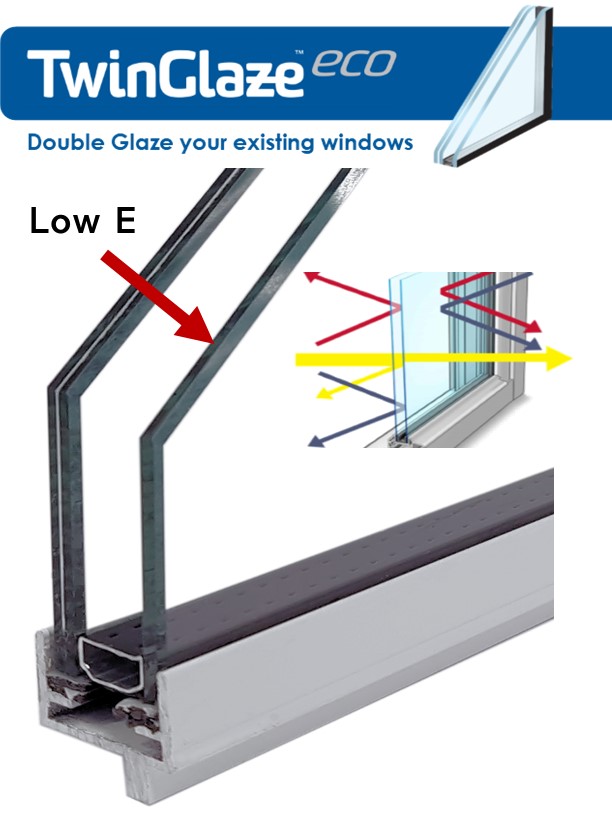All Categories
Featured
Table of Contents
How Are Double Glazed Windows More Energy Efficient? in WA Western Australia
Glazing just implies the windows in your house, including both openable and fixed windows, in addition to doors with glass and skylights. Glazing in fact simply implies the glass part, but it is normally utilized to refer to all aspects of an assembly consisting of glass, movies, frames and furnishings. Taking notice of all of these elements will assist you to accomplish reliable passive style.

Energy-efficient glazing makes your home more comfortable and drastically reduces your energy expenses. Improper or inadequately developed glazing can be a major source of undesirable heat gain in summertime and considerable heat loss and condensation in winter season. Approximately 87% of a house's heating energy can be gained and as much as 40% lost through windows.
Which Double Glazed Windows Are Best For Summer? in Mount Hawthorn Perth
Glazing is a considerable financial investment in the quality of your house. The cost of glazing and the expense of heating and cooling your house are closely associated. A preliminary financial investment in energy-efficient windows, skylights and doors can greatly lower your annual cooling and heating expense. Energy-efficient glazing also decreases the peak heating and cooling load, which can reduce the needed size of an air-conditioning system by 30%, causing more expense savings.

This tool compares window choices to a base level aluminium window with 3mm clear glass. Understanding a few of the crucial homes of glass will help you to select the very best glazing for your home. Secret properties of glass Source: Adapted from the Australian Window Association The quantity of light that goes through the glazing is referred to as noticeable light transmittance (VLT) or noticeable transmittance (VT).
Double Glazed Windows In Melbourne in Munster WA
The U worth for windows (revealed as Uw), describes the conduction of the whole window (glass and frame together). The lower the U worth, the higher a window's resistance to heat circulation and the much better its insulating value.
If your home has 70m2 of glazing with aluminium frames and clear glass with a U worth of 6. 2W/m2 C, on a winter season's night when it is 15C colder outside compared with inside, the heat loss through the windows would be: 6. 2 15 70 = 6510W That is equivalent to the total heat output of a big space gas heating unit or a 6.
Stay Cool This Summer With Double Glazed Windows - Aaa Glass in Parmelia Western Australia

If you select a window with half the U value (3. 1W/m2 C) (for instance, double glazing with an argon-filled gap and less-conductive frames), you can cut in half the heat loss: 3. 1 15 70 = 3255W The solar heat gain coefficient (SHGC) for windows (revealed as SHGCw) measures how readily heat from direct sunshine streams through an entire window (glass and frame together).
The lower a window's SHGC, the less solar heat it sends to your house interior. Glazing producers declare an SHGC for each window type and design. The real SHGC for windows is affected by the angle that solar radiation strikes the glass. This is referred to as the angle of incidence.
Benefits Of Replacing Double Glazing Windows In The Summer in Cloverdale Perth
When the sun is perpendicular (at 90) to the glass, it has an angle of occurrence of 0 and the window will experience the optimum possible solar heat gain. The SHGC declared by glazing makers is constantly computed as having a 0 angle of incidence. As the angle increases, more solar radiation is shown, and less is transferred.
Table of Contents
Latest Posts
Which Type Of Glass Is Best For Energy Efficiency? - A&l Windows in Medina WA
Double Glazing Versus Secondary Glazing in East Victoria Park Western Australia
A Complete Guide To Double Glazed Windows in Kewdale Perth
More
Latest Posts
Which Type Of Glass Is Best For Energy Efficiency? - A&l Windows in Medina WA
Double Glazing Versus Secondary Glazing in East Victoria Park Western Australia
A Complete Guide To Double Glazed Windows in Kewdale Perth